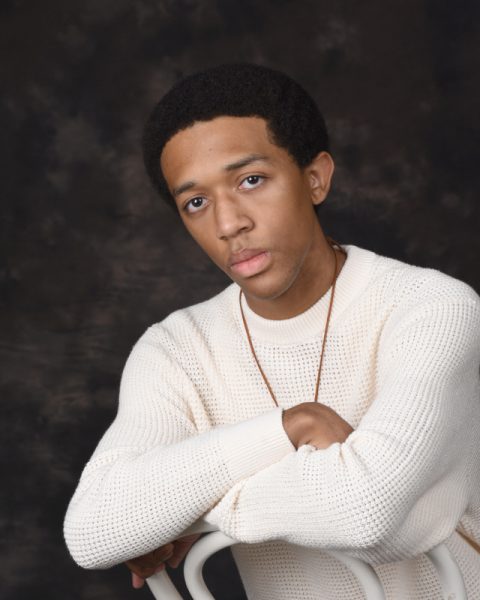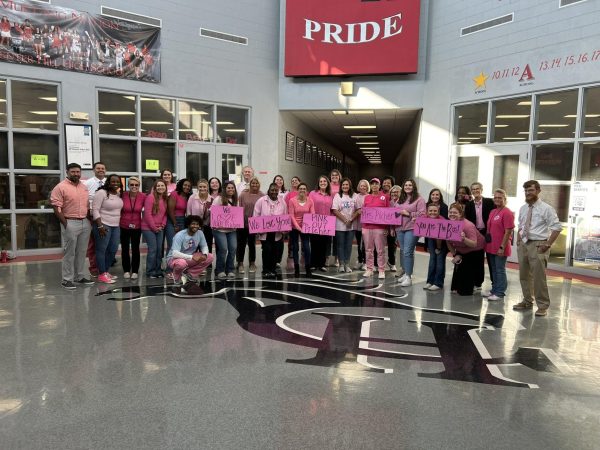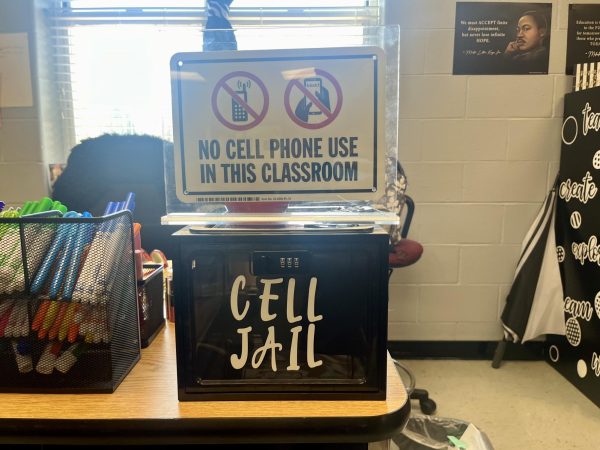The Ukraine Crisis: the Russo-Ukrainian Disputes in Crimea (and Beyond)
Since 1991, tensions in eastern Europe between Russia and Ukraine have been at their highest in recent years. Russia has created a military build up on its border with Ukraine, igniting fears of a potential invasion against its neighbor to annex the state of Crimea. Here’s what you need to know.
What is the conflict about the Russian-Ukrainian border?
Since 1991, tensions in eastern Europe between Russia and Ukraine have been at their highest in recent years. Russia has created a military build up on its border with Ukraine, igniting fears of a potential invasion against its neighbor to annex the state of Crimea. Here’s what you need to know:
What is the Ukraine Crisis?
Since becoming independent from the Soviet Union in 1991, the country of Ukraine, a Texas-sized nation in the southeastern region of Europe, has been plagued with a dictatorial democracy, a weak economy, and foreign policy that alters between pro-European and pro-Russian.
Beginning in November of 2013, former Ukrainian President Victor Yanukovych rejected the European Union-Ukraine Association Agreement, which had the goal of greater integrating Ukraine with the European Union, an economic and political union in Europe. Mass protests sparked across the country, one of the most notable protests was the 29 November, 2013, protest in Ukraine’s capital, Kiev, in Independence Square, which was violently suppressed.
Since then, there have been several internal national conflicts. In February of 2014, anti-government protests overthrew President Yanukovych and his sitting government. In retaliation, Russia, under the leadership of current President Vladimir Putin, invaded and annexed Crimea. Hence, pro-Russian separatists in Ukraine began invading the eastern region of its nation. The rebels fought against the Ukrainian military, including shooting down Malaysian Airlines flight 17 on 17 July, killing 298 people. The rebels were aided by the Russian military, who invaded eastern Ukraine in August, worsening Russo-Ukrainian relations to its lowest point since the Cold War (1945-1991).
The root of Ukraine’s conflicts is its extensive history with Russia. Ukraine is divided about evenly between Ukrainians who want to unite with the rest of Europe and Ukrainians who want to unite with Russia. This internal political crisis was seen as inevitable due to the polarized language barrier that exists between the western Ukrainians and the eastern Russians, further intensified by Western and Russian political influence in their perspective regions. In Russia, President Putin pledged an imperialist, nationalistic view that views Ukraine as a region of Russia and a victim of Western hostility.
In 2022, Russia sent as many as 130,000 troops along its border with Ukraine, with US national security adviser Jake Sullivan stating that “we are in the window where an invasion could begin.”
Russia dismissed the United State’s concerns about a developing invasion as “hysteria” on 5 February. However, the country has been making preparations for war, including moving military equipment, blood, and medical units to its front lines. Diplomatic talks have been opened between American President Joseph Biden and Putin, but they haven’t yielded any solutions. Russia, proclaiming its claims on Crimea, issued a list of demands from the United States, including the regard of the North Atlantic Treaty Organization (NATO) in prohibiting their eastern expansion, denying Ukrainian membership into the European Union, and decreasing their presence in nations that joined after 1997.
The demands are “a Russian attempt not only to secure interest in Ukraine but essentially relitigate the security architecture in Europe,” Micheal Kofman reported, a research director in Russian studies program at CNA, a Virginian research and analysis organization.
American and Western foreign policies unite in support against Russia, with the United States placing 8,500 troops on alert as more troops are planned to be deployed to Europe.
What is the History Between Ukraine and Russia?
When the Soviet Union collapsed in the 1990s, Ukraine had the world’s third-largest nuclear arsenal. The United States and Russia underwent a series of diplomatic agreements with Ukraine to denuclearize the nation. The nation gave its nuclear warheads to Russia in exchange for protection from Russian aggression.
However, the security assurances were violated in 2014 when Russia invaded Ukraine, annexing the Crimean Peninsula, and backed a pro-Russian separatist rebellion in the Donbas region, causing the death of more than 14,000 people. Anti-Russian protests in Russia would overthrow the sitting government; American diplomats visited the demonstrations, which would agitate the new President of Russia, Putin.
Due to the premise of a post-Soviet Europe, many people believe that Russia is motivated to reclaim some semblance of empire due to the fall of the Soviet Union; Ukraine is the core of the motivation. Putin has stated that Russians and Ukrainians “were one people – a single whole”, according to his personal article regarding the July 2021 Direct Line, but are divided by the influence of the Western powers.
What is Crimea?
Crimea is a peninsula in the Black Sea off of Ukraine. For centuries, it’s considered one of the world’s most strategic locations because it was the site of principal engagements of the Crimean War (1853-1856) between the Russian Empire and the coalition of France, the United Kingdom, and the Ottoman Empire.
This region is home to large Russian military bases and was used as sort of a military hub for the Soviet Union and the Russian Empire. Most of its citizens, given special autonomy, viewed themselves as Russians.
Following the protests and wars in February and March of 2014, on 16 March, a referendum, a general vote by the public on a single political issue, was held. An overwhelming majority of Crimeans voted to be annexed by Russia. However, most of the world saw the secession vote as illegible because Crimea at the time was occupied by hostile, secretive Russian military occupation without international monitoring and many reports of intimidation; the referendum was held in only a matter of two weeks; and it was illegal under Ukrainian law. Despite this, Crimea was annexed by Russia. In response, the United States and European Union imposed sanctions on Russia to punish them for their acts, but Crimea wasn’t returned back to Ukraine.
What is the Russian Perspective?
Russia has repeatedly denied plans on invading Ukraine, insisting that they do not pose a threat and that their movement of troops should not be cause for alarm. On the contrary, Russia sees the mobilization of troops from NATO and the United States as a threat to their own security, also accusing Ukraine of making preparations for war to reclaim the Donbas region. Ukraine has denied this accusation.
Putin, believing that the West has not promised its previous verbal assurances, has called for certain legal agreements to prohibit further NATO expansion eastwards towards Russia. He also said that if NATO continued to deploy troops and weapons towards Russia, they would be crossing a “red line”.
“And all of this, of course, leads to a further aggravation of the situation on the border line,” Russian spokesman Dmitry Peskoc said in November.
If NATO and the US do not change their foreign policies regarding Ukraine, Russian Foreign Minister Sergey Lavrov warned that Russia would have the “right to choose ways to ensure its legitimate security interests.
What is the Ukrainian Perspective?
Ukraine insists that Russia cannot prevent their relations with the West.
“Russia cannot stop Ukraine from getting closer with NATO and has no right to have any say in relevant discussions,” the Ukrainian Foreign Ministry said in a statement to CNN. “Any Russian proposals to discuss with NATO or the US any so-called guarantees that the Alliance would not expand to the East are illegitimate.”
In November of 2021, Ukrainian Minister Dmytro Kuelba forewarned that a planned coup could be staged as part of Russia’ plan ahead of a military invasion. “External military pressure goes hand in hand with domestic destabilization of the country.”
Though tensions have been worsening, Ukraine’s government faces many internal conflicts. The popularity of its federal government has greatly decreased due to recent changes in political challenges, including the COVID-19 pandemic and a poor economy. Many people are also unhappy with the government since it hasn’t delivered on promises to end the conflict in the country’s eastern regions. Anti-government protests have since taken place in Kyiv.
“We are aware of everything, we are ready for everything,” President Volodymyr Zelensky stated to the public in January of 2022.
What is the Perspective of NATO?
NATO Secretary General Jens Stoltenberg said that “there will be a high price to pay for Russia” if it invades Ukraine. “We have a wide range of options: economic sanctions, financial sanctions, [and] political restrictions.”
After Russia invaded Ukraine in 2014, NATO increased its defenses with eastern-front battle groups in the Baltic countries and Black Sea region. However, because Ukraine is not a NATO member, it does not have the same security guarantees as NATO members; it is seen as a NATO partner. Additionally, Stolenberg does not see Ukraine as a possible member of NATO, saying that Russia does not hold the right to tell Ukraine that it could not be a NATO member.
In mid-January, there were high-stakes discussions between Russia and NATO allies in Brussels, Belgium. Both parties have admitted that their differences will be difficult to triumph, but expressed the reason to continue talks.
What is the American Perspective?
President Joseph Biden told Zelensky via telephone in January that the United States and its allies “will respond decisively if Russia further invades Ukraine.” However, during a White House news conference, he stated that the conflict was a “minor incursion” by Russia that would not require a full-scale invasion of the country.
Though Biden promised to sanction Russia if Putin sends Russian troops to the border, he suggested that other Western nations should not react to the same degree. “There are differences in NATO as to what countries are willing to do, spending on what happens.”
“President Biden has been clear with the Russian President,” press secretary Jen Paski wrote in a statement to clarify Biden’s response, “if any Russian military forces move across the Ukrainian border, that’s a renewed invasion, and it will be met with a swift, severe and united response from the United States and our Allies.”
The Department of Defense has developed multiple military options for Biden if he decides to increase the American military presence in eastern Europe in response to Russian aggression, emphasizing that the focus is on diplomacy and economic sanctions. Russian Deputy Foreign Minister Sergey Ryabkov and US Deputy Secretary of State Wendy Sherman held meetings in Geneva, Switzerland, on 10 January to discuss the de-escalation of Russian advance.
According to the Pentagon, the United States sent about $450 million in security assistance to Ukraine in 2021, including later packages of ammunition and weapons in December. The Biden administration is now considering providing more weapons to Ukraine, according to a senior US official.
In 2014, the administration under President Barack Obama was taken by surprise by the Russian invasion of Crimea. Since then, US officials have stated that they could not be caught off guard by another Russian military operation.
What are the Determining Factors?
Kazakhstan and energy supply have posed probing concerns to Russia since the beginning of 2022.
In early January, violent protests caused the Kazakh government to resign, prompting Russian forces to suppress them. However, experts have warned that Russia’s intervention didn’t end the conflict in Kazakhstan.
“Once Russians are in your house, sometimes it is very difficult to get them to leave,” US Secretary of State Antony Blinken said.
On the issue of energy supply, Ukraine views the controversial Nord Stream 2 pipeline, the pipeline that connects Russian gas supplies to Germany, as a threat to its domestic security. The Nord Stream 2 is one of two pipelines that Russia has placed underwater in the Baltic Sea along with its traditional land-based pipeline, Nord Stream, that connects through eastern Europe, including Ukraine.
Though Ukraine views the pipelines as threats, they also see that any military action can disrupt the vital flow of natural gas to Europe. Global analysts and American lawmakers have raised concerns that the Nord Stream 2 pipelines will increase European dependence on Russian gas and allow Russia to monopolize on its exports. Eastern European nations could also be prohibited from their lucrative tariff fees on Russia if the pipelines are removed.
In May of 2021, the Biden administration removed sanctions on the Nord Stream 2 pipeline, but only to rebuild its foreign relations with Germany. In November, the administration imposed new sanctions on Russian-linked vessels and a vessel linked to the pipeline. Some Congressional senators have stated that more sanctions are needed to prevent Russia from using the pipelines as a weapon and Ukraine must class for tougher foreign policies.
What Will Happen Next?
The Russo-Ukrainian Crisis has become a top-level priority for the United States, surpassing issues with China, climate change, the pandemic, and domestic conflicts.
“One thing we’ve seen in common between the Obama administration and the Biden administration: They don’t view Russia as a geopolitical event-shaper, but we see Russia again and again shaping geopolitical events,” Rachel Rizzo said, a researcher at the Atlantic Council’s Europe Center.
The United States has deployed over 3,000 troops to Europe and will reportedly send another 3,000 to Poland in show of solidarity for NATO, but the Biden administration clarified that American soldiers will not fight in Ukraine if war begins. The administration, along with its European allies, are considering several plans to punish Russia including the “nuclear options”: an oil and gas embargo or banning Russia from SWIFT, the electronic message service that makes global financial transactions possible. The options seem unlikely as they are believed to harm the global economy. Because Russia isn’t similar to Iran nor North Korea, its economy relies heavily on trade, especially on raw materials, gas, and oil.
Richard Connolly, a lecturer in political economy at the Center of Russian and Eastern European Studies at the University of Birmingham said that “types of sanctions that hurt your target also hurt the sender. Ultimately, it comes down to the price the populations in the United States and Europe are prepared to pay.
Currently, the administration is considering a radical ban on advanced technologies in Russia. They are also considering closing the Nord Stream 2 pipeline if needed.
“[Putin] has two options,” Olga Lautman, a senior at the Center for European Policy Analysis, said. He can either, “say, ‘Never mind, just kidding,’ which will show his weakness and shows that he is intimidated by US and Europe standing together – and that great weakness for him at home and with countries he’s attempting to influence. Or he goes full forward with an attack. At this point, we don’t know where it’s going, but the prospects are very grim.”
Due to the stakes of the overall conflict, any withdrawal from Russia seems unlikely. It doesn’t mean that it couldn’t happen. It also doesn’t mean that any diplomatic solution can be made that gives Putin enough reason to declare victory without the West meeting all of his demands. It also doesn’t mean that the United States and Russia will remain in a long standoff with Ukraine in the middle. It does mean that the prospect of war remains.
“For many Ukrainians, we’re accustomed to war,” said Oleksiy Sorokin, political journalist for the Kyiv Independence. “Having Russia on our tail, having this constant threat of Russia going further—I think many Ukrainians are used to it.”

Caleb Jeans
Staff/Reporter, The Pony Express
“I don't choose to be uncomfortable; reality has made me uncomfortable.” — Unknown
Senior at CHHS,...





